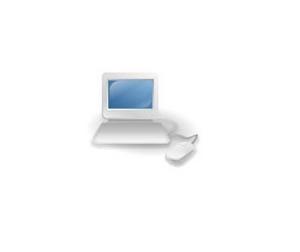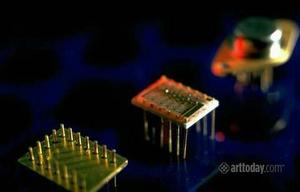If your PC is running slowly, a disk defragmentation will provide it with a processing pick-me-up. Every time you modify a file on your personal computer — by saving, editing, or deleting — the information from the file gets stored in a new place on the PC’s hard disk. This causes the file to fragment; the more changes you make to the file, the more space it takes up on your PC. Each time you open the file, your computer has to search in several different places to find all the pieces, which slows the speed of your computer. Disk defragmenting helps your PC put all of the pieces back together. This helps your computer speed up, as it won’t require as much time and effort to look for the files. Defragging a PC is an easy process on Windows.
1.) Click on the “Start” menu. You’ll see this in the lower left-hand corner of your computer screen. Windows Vista will display only a Windows logo.
2.) Hover your cursor over “All Programs” (or just “Programs”), then “Accessories”, and then “System Tools”. Click on the program named “Disk Defragmenter”.
3.) The program will open up to show a list of your hard disks, “C:” being the most commonly used. Select a drive to defragment, then click “Defragment” on the bottom left of the program’s screen. It’s not necessary to click “Analyze” first; clicking this will simply show you immediately how fragmented your files are.
You may still use your PC while the defragmenting takes place. This can take anywhere from a few minutes to an hour or more. If your hard disk has never been defragmented before, or if it’s very large, the process will take longer.
4.) Once your hard disk has finished defragging, a window will pop up stating “Defragmentation is complete”. You may click “View Report”, or simply click “Close”.
Windows Vista offers a similar process for defragmentation. Follow steps 1 and 2 listed above; a window will then pop up asking for permission to continue. You may need to enter a password if you’re not the computer’s administrator. Otherwise, click “Continue”. The Disk Defragmenter program will pop up. If you would like to schedule a regular defragmentation, feel free to play with the options available. If you don’t want to schedule a defragging, you can click on the box to the left of “Run on a schedule” to disable a scheduled defragging (make sure the check mark is gone). Or you can leave it alone to keep the defragmentation on a schedule. Click “Defragment now…” to bring up a list of available hard disks to defrag. Click “OK” and the defragmentation will begin.
Regular defragmentation will help your PC run more smoothly. Although defragging should improve the performance of your computer, you don’t need to defragment every day. If you are not often modifying large files, you should only have to defrag your PC once a month.






